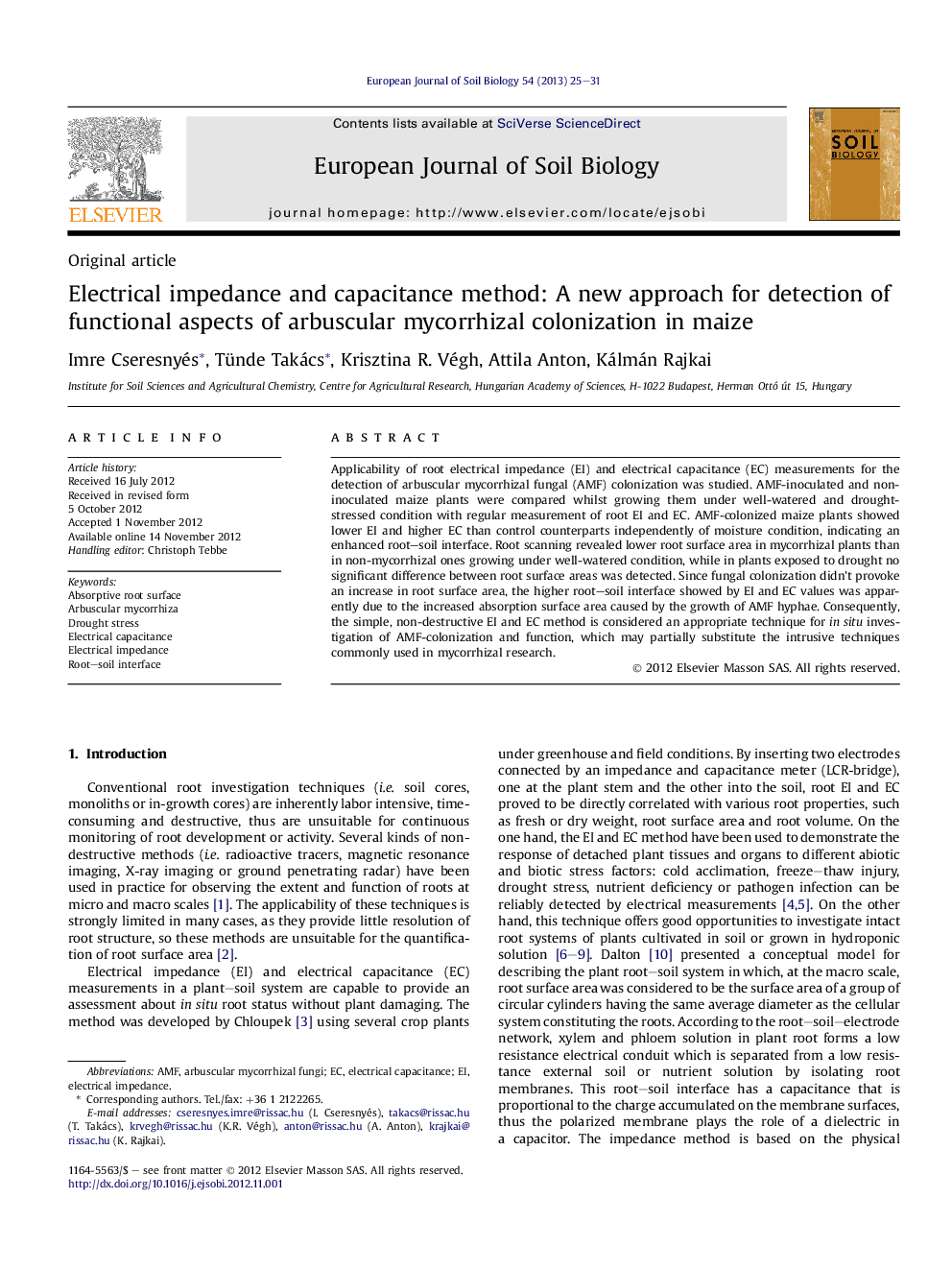| کد مقاله | کد نشریه | سال انتشار | مقاله انگلیسی | نسخه تمام متن |
|---|---|---|---|---|
| 4391946 | 1618138 | 2013 | 7 صفحه PDF | دانلود رایگان |

Applicability of root electrical impedance (EI) and electrical capacitance (EC) measurements for the detection of arbuscular mycorrhizal fungal (AMF) colonization was studied. AMF-inoculated and non-inoculated maize plants were compared whilst growing them under well-watered and drought-stressed condition with regular measurement of root EI and EC. AMF-colonized maize plants showed lower EI and higher EC than control counterparts independently of moisture condition, indicating an enhanced root–soil interface. Root scanning revealed lower root surface area in mycorrhizal plants than in non-mycorrhizal ones growing under well-watered condition, while in plants exposed to drought no significant difference between root surface areas was detected. Since fungal colonization didn't provoke an increase in root surface area, the higher root–soil interface showed by EI and EC values was apparently due to the increased absorption surface area caused by the growth of AMF hyphae. Consequently, the simple, non-destructive EI and EC method is considered an appropriate technique for in situ investigation of AMF-colonization and function, which may partially substitute the intrusive techniques commonly used in mycorrhizal research.
► Root surface area is measurable in situ by electrical impedance or capacitance method.
► We first used these methods for detection of AM-fungal colonization in maize.
► Fungal infection decreases the root impedance and increases the root capacitance.
► Sterile and colonized plants can be distinguished by electrical root properties.
► The introduced non-destructive methods may contribute to mycorrhizal research.
Journal: European Journal of Soil Biology - Volume 54, January–February 2013, Pages 25–31